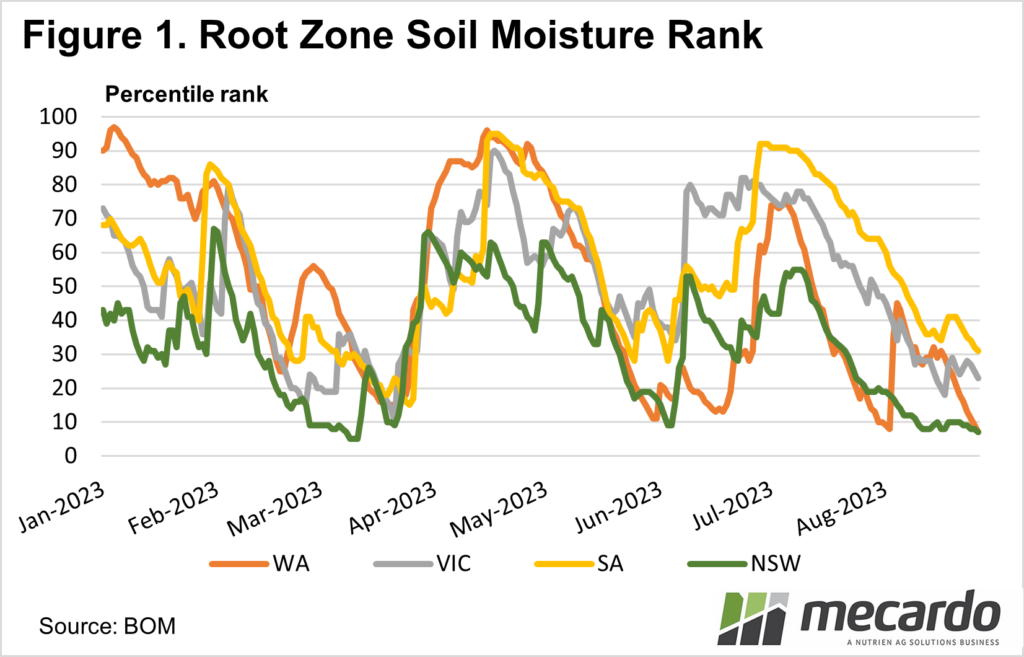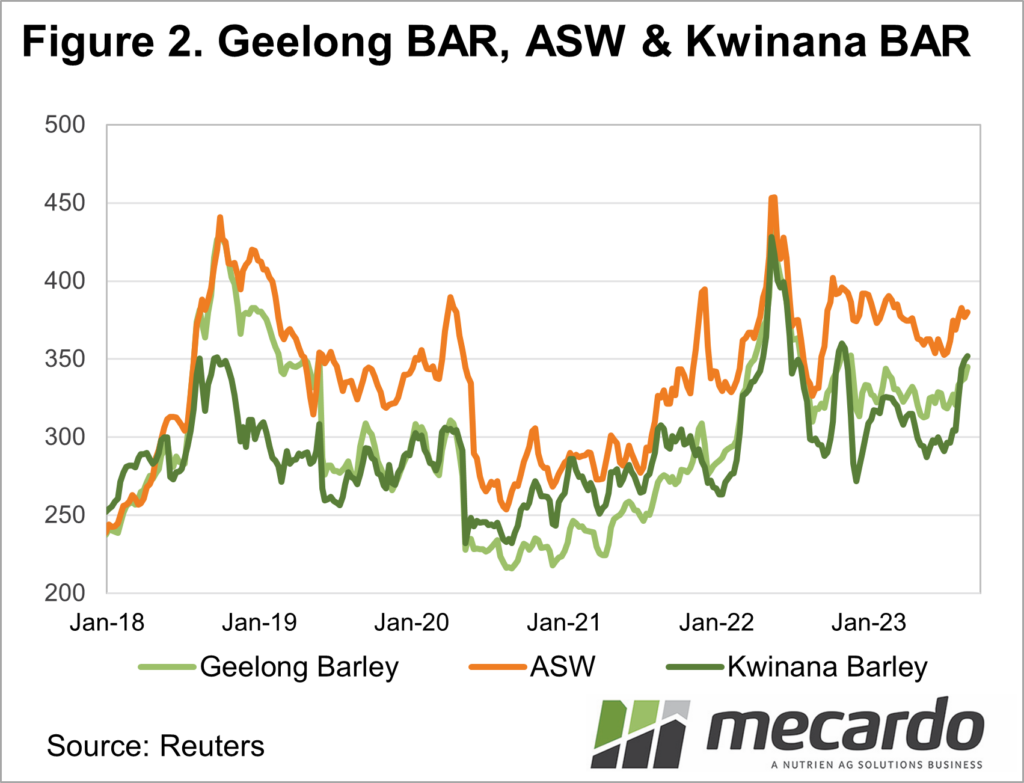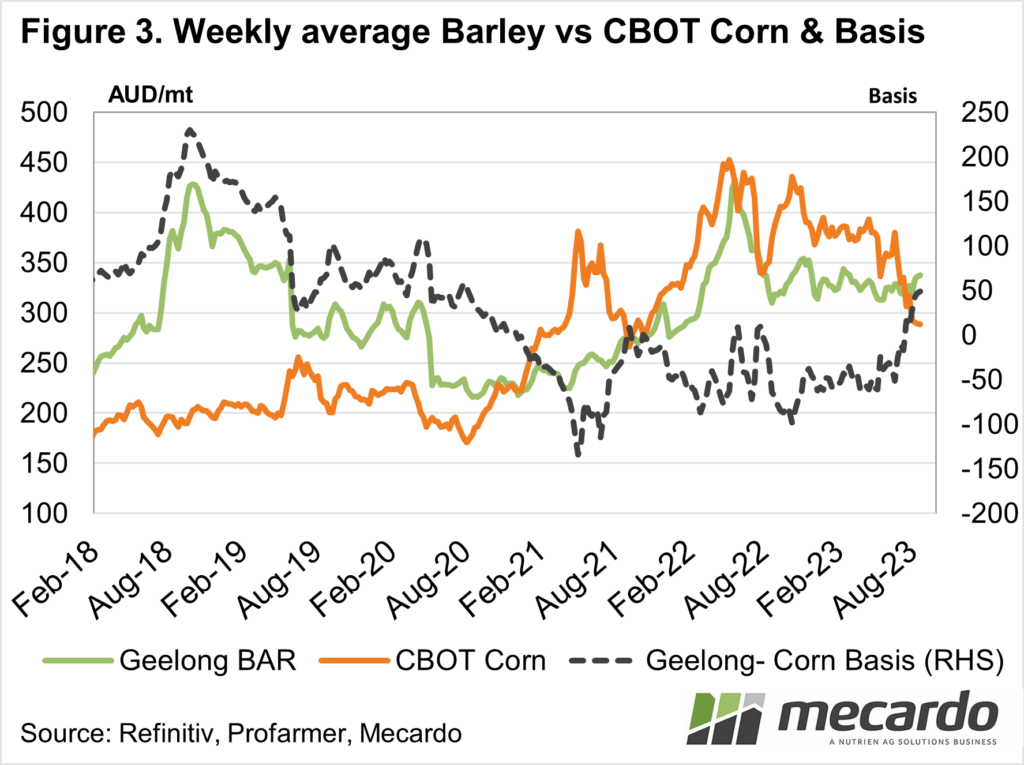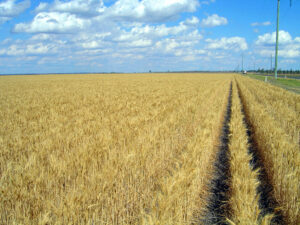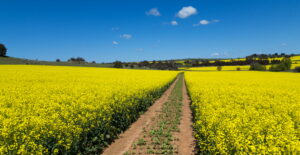Feed grain markets have been receiving support on a couple of fronts in recent weeks on the East Coast. When we look to the West we can see the impact of the lifting of Chinese tariffs on barley markets.
There has been little fanfare regarding the lifting of Chinese barley tariffs, but it has certainly added some value for barley producers. The news has been partly overshadowed by drying conditions, which is also adding support for feed grains.
Figure 1 shows some data from the Bureau of Meteorology (BOM) website ranking root zone soil moisture across the four main cropping states. All the soil moisture rankings are low, with Victoria and SA sitting much better than NSW and WA.
NSW has been dry for over a month, while WA has declined sharply in recent weeks. If you look at the map on the BOM website the WA data is actually skewed higher by very high levels in the Kimberly. The wheatbelt looks very dry.
The combination of dry weather and the lifting of tariffs has seen barley take off in recent weeks, especially in WA. Figure 2 shows Geelong ASW for context, along with Kwinana and Geelong BAR.
With WA mainly an export market, the lifting of tariffs was going to have more impact, and BAR has reacted by rallying over $50/t over the last month. Barley in WA is now more expensive than in Geelong.
Looking at local prices versus international levels, barley has also shown strength. Figure 3 shows that it has likely been driven by corn prices falling heavily, but the fact barley has rallied against this trend is telling enough.
In late June Geelong BAR was at a $51 discount to CME Corn. On Friday Geelong BAR sat at a $45 premium to corn. During a proper drought year, when we move from export parity to import parity, barley can be at a $200 plus premium to corn. We’re not suggesting this will happen, but that is the risk.
What does it mean?
For feed consumers, the opportunity to manage prices has somewhat disappeared. With our prices rallying relative to international, drought risk is being built in. Declining international markets will take some of the sting out of prices, but without good rain in NSW especially, we can expect basis to continue to creep higher.
Have any questions or comments?
Key Points
- Barley markets have reacted to both drying conditions and the lifting of tariffs.
- WA and NSW are the driest areas, and prices are reacting accordingly.
- With further dry weather barley and feed values will continue to move higher.
Click on figure to expand
Click on figure to expand
Click on figure to expand
Data sources: CME, ASX, BOM, Mecardo





